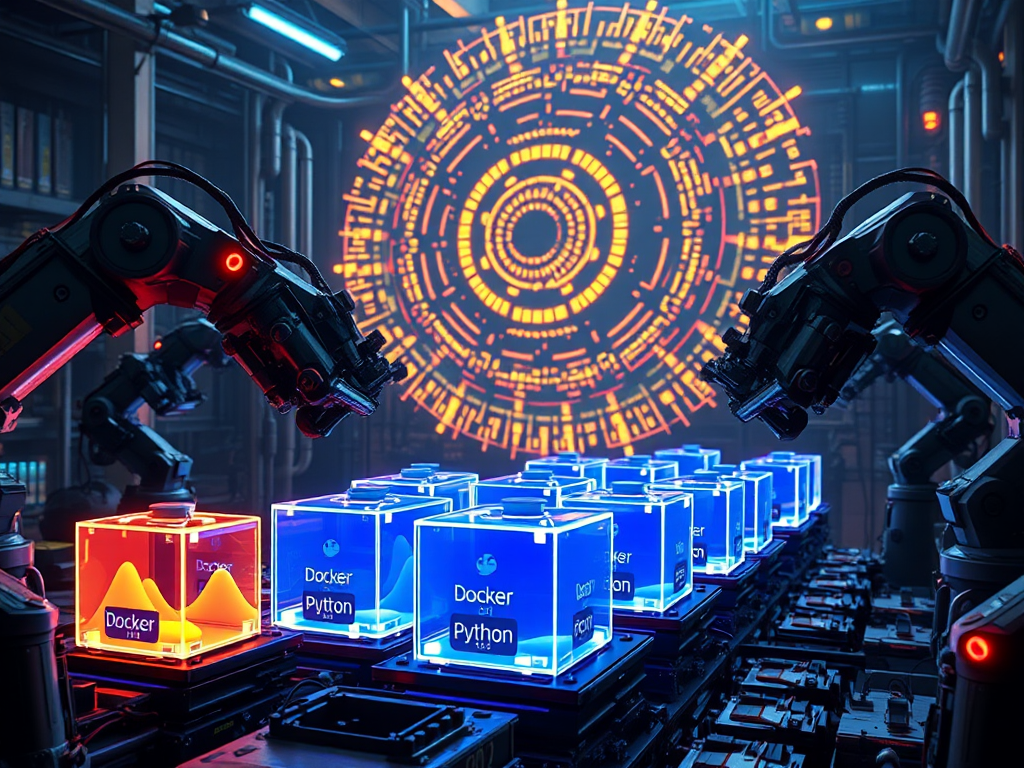Do you often find that a Python program running perfectly on your computer throws errors on someone else's? Or that the development environment you painstakingly configured needs to be set up all over again on a new machine? If so, containerization technology is your savior! Today, let's explore the mysteries of Python containerization together.
What is a Container?
Simply put, a container is like a lightweight virtual machine that can package your application and all its dependencies. It ensures your program runs the same way everywhere, unaffected by external environments. Sounds cool, right?
The core idea of containerization is to package the application and its runtime environment into an independent, portable unit. This unit is what we call a "container."
You can think of a container as a carefully packed suitcase. Inside, along with your clothes (application), are all the essentials you need (dependencies). Wherever you go, as long as you have this suitcase, you can maintain the same quality of life. Isn't that a vivid analogy?
Enter Docker
Speaking of containerization, we must mention Docker. Docker is like the "king" of the container world, making it exceptionally easy to create and manage containers.
With Docker, you can easily package your Python application into an image. This image contains your code, runtime environment, system tools, system libraries, and settings. With this image, you can run your application on any system that supports Docker without worrying about environment inconsistencies.
I remember being amazed by Docker's magic the first time I used it. An environment that originally took hours to configure could now be set up in just minutes. Isn't that incredible?
Hands-On Practice
All talk and no action is not our style, so let's get hands-on and see how to containerize a Python application.
First, we need to create a Dockerfile. A Dockerfile is like a recipe that tells Docker how to "cook" your application.
FROM python:3.9-slim
WORKDIR /app
COPY . /app
RUN pip install --no-cache-dir -r requirements.txt
CMD ["python", "app.py"]
What does this Dockerfile do? It first selects a base image, then sets the working directory, copies application files, installs dependencies, and finally specifies how to run the application. Pretty straightforward, right?
With the Dockerfile, the next step is to build the image:
docker build -t my-python-app .
This command creates an image named my-python-app based on the Dockerfile. . indicates that the Dockerfile is in the current directory.
Once the image is built, we can run the container:
docker run -d -p 5000:5000 my-python-app
This command starts a container and maps port 5000 of the container to port 5000 of the host. The -d parameter allows the container to run in the background.
Just like that, your Python application has been successfully containerized! Isn't it amazing?
Advanced: MongoDB Integration
Earlier, we containerized a simple Python application, but in real development, we often need to use databases. So, how do we integrate MongoDB into a containerized Python application?
First, we need to create a MongoDB database. If you're using Azure, you can create one with the following commands:
LOCATION='eastus'
RESOURCE_GROUP_NAME='my-resource-group'
ACCOUNT_NAME='my-mongodb-account'
az group create --name $RESOURCE_GROUP_NAME --location $LOCATION
az cosmosdb create --name $ACCOUNT_NAME --resource-group $RESOURCE_GROUP_NAME --kind MongoDB
az cosmosdb mongodb database create --account-name $ACCOUNT_NAME --resource-group $RESOURCE_GROUP_NAME --name my_database
az cosmosdb mongodb collection create --account-name $ACCOUNT_NAME --resource-group $RESOURCE_GROUP_NAME --database-name my_database --name my_collection
These commands create a MongoDB database and collection on Azure. Doesn't it feel high-end?
Next, we need to obtain the MongoDB connection string:
az cosmosdb keys list --name $ACCOUNT_NAME --resource-group $RESOURCE_GROUP_NAME --type connection-strings
With the connection string, we can use MongoDB in the Python application:
from pymongo import MongoClient
client = MongoClient('mongodb://<username>:<password>@<server-name>.mongo.cosmos.azure.com:10255/?ssl=true')
db = client.my_database
collection = db.my_collection
collection.insert_one({"name": "example", "value": 42})
This code shows how to connect to MongoDB and insert data. Simple, right?
Of course, in a real application, you might need to handle more complex data operations. But the basic principle is the same.
Benefits of Containerization
After all this, you might ask: what are the benefits of containerization?
First, containerization ensures environment consistency. Remember the problem we mentioned at the beginning? Running fine on your computer but not on someone else's. With containers, this problem is solved. Since the container includes all necessary dependencies, the environment is consistent no matter where it runs.
Second, containerization simplifies dependency management. You no longer need to manually install various libraries and tools; all dependencies are already packaged in the container. This not only saves time but also avoids issues caused by inconsistent dependency versions.
Moreover, containerization increases portability. Your application can be easily deployed and migrated across different environments, whether it's a local development machine, a test server, or a production environment.
Finally, containerization can improve resource utilization. Compared to traditional virtual machines, containers are more lightweight, start faster, and consume fewer resources.
Conclusion
Python containerization is a powerful technology that lets your code soar like a bird, free from environmental constraints. With this introduction, do you have a deeper understanding of containerization?
Containerization technology is changing the way we develop and deploy applications. If you haven't tried it yet, why not start today and give your Python application a "container" home? Trust me, once you experience the convenience of containerization, you'll marvel at how easy programming can be!
Are you ready to start your containerization journey? Let's embrace this revolutionary technology and make Python programming simpler, more efficient, and more fun!
Do you have any questions about Python containerization? Feel free to leave a comment, and let's discuss and grow together!




 Previous
Previous 

